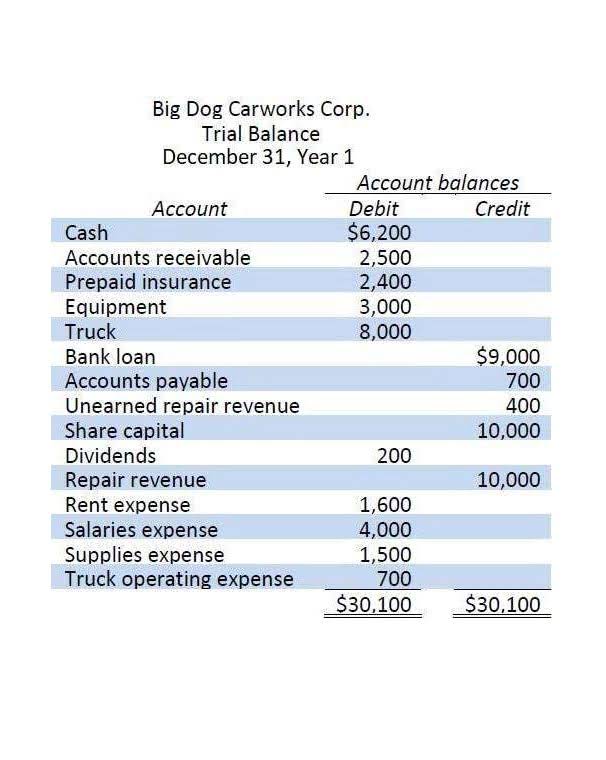
Anyone who thinks about investing will be warned Bookkeeping for Startups about different types of financial risks, such as currency risk and methods to mitigate them, such as hedging. Financial risk is something that businesses are exposed to, and shareholders and potential shareholders must be aware of this. Managing financial risk is crucial for individuals and companies to safeguard their assets and ensure long-term viability.

Foreign Investment Risk

Examples include company-specific events like management changes, product recalls, or competitive pressures. Effective risk management requires continuous monitoring of financial positions https://csxpress.co.za/single-step-vs-multi-step-income-statement-key/ and market conditions, as well as an understanding of the potential impacts of various risk factors. The relevant areas of concern may include the financial, legal, labor, tax, IT, environment and market/commercial situation of the company.
Bank underwriting
It is important for businesses to understand the risks they face and to take steps to mitigate them. This could include diversifying investments, hedging against market risk, and ensuring that they have access to capital. Several sophisticated techniques are employed to gauge financial risk accurately. Value at Risk (VaR) is a widely used metric that estimates the maximum potential loss over a specified period under normal market conditions. Stress testing goes further, examining how certain financial positions would fare under extreme market scenarios. Sensitivity analysis explores how changes in market conditions could affect investment outcomes.
Is a Free House Valuation Really Accurate in Today’s Market?
- Governments issue debt in the form of bonds and notes to fund wars, build bridges and other infrastructure, and pay for their general day-to-day operations.
- When a company or individual is exposed to litigation, contract breaches, or non-compliance penalties, it leads to legal and financial consequences.
- The types of financial risk will be different for each company according to the operations they perform.
- Small businesses have come to rely on AI risk management solutions, which deliver accurate forecasts and valuable guidance.
- Operational risk is the risk of loss due to errors, interruptions, or damages caused by people, systems, or processes.
In fact, as we saw there is a component of risk (market risk or systematic risk) that cannot be diversified. In short, if the whole world economy will suffer (think of the 2008 global crisis), there is nothing you can do about it. As they say “A trouble shared is a trouble halved.” Hopefully, you saved enough money for the rainy days and will survive. In fact, if you keep investing in other restaurants, you may reduce your competitive risks, but this will not mitigate the industry risk. But the problem is that while some risk may be easily mitigated, others are not. To simplify we have to find the % return that would convince the investor to risk his own money.
- Finding the right balance between risk and reward is the cornerstone of smart financial planning.
- The returns from different assets are highly unlikely to be perfectly correlated and the correlation may sometimes be negative.
- Notably, the precious metal industry experienced significant growth after the 2008 Financial Crisis.
- Broadly speaking, the concept may be applied to a range of scenarios, such as financial markets, business administration, and governing bodies.
- For example, duly diligent efforts to locate and/or serve a party with civil process is frequently a requirement for a party seeking to use means other than personal service to obtain jurisdiction over a party.
What are some common financial risks that financial advisory services in India help manage?

The term risk tolerance describes how comfortable you are with the idea of losing money in the short term so you can earn a higher return with your investments over the long run. It is an important component in investing because it often determines what kind of investments you choose. Investors with a higher risk tolerance often invest in highly volatile assets like stocks and equity funds while those with a low risk tolerance may choose bonds and other fixed-income assets. Your age, investment goals, and income can contribute to your risk tolerance. Unsystematic risk, also known as specific risk or idiosyncratic risk, is a category of risk that only affects an industry or a particular company. Unsystematic risk is the risk of losing an investment due to company or industry-specific hazards.

- Early in a company’s life cycle, the product-market fit is unknown, the size of the target market may be unclear, barriers to entry may be high, and so on.
- A suite of financial ratios referred to as leverage ratios analyzes the level of indebtedness a company experiences against various assets.
- The solution from the investor’s point of view is to diversify investment choices to mitigate overall risk.
- Asset liquidity risk occurs as a result of insufficient buyers or sellers against sell or buy orders.
- He has a diverse background in corporate finance and project management, and has worked for Fortune 500 companies as well as small businesses.
- However, beta is calculated using historical data points and is less meaningful for investors looking to predict a stock’s future movements for long-term investments.
They employ a range of financial instruments, such as derivatives for hedging and diversification strategies, to spread and manage risk. Their important role is to help individuals, businesses, and institutions navigate market uncertainties with more confidence. Individuals and companies can respond dynamically to market changes and emerging risks by regularly reviewing and adjusting strategies.
Frameworks to Assess Business Risk
As interest rates rise, bond prices in the secondary market fall—and vice versa. A fundamental idea in finance is the relationship between risk and return. The greater the amount of risk an investor is willing to take, the greater the potential return. Risks can come in various ways, and investors need to be compensated for taking on additional risk.

Financial Risks for Individuals
Of course, this is hypothetical, and after looking at all factors, the decisions related to the capital structure should be define financial risk made. Liquidity, asset-backed, and foreign investment risk are all concerns that have the potential to impact the profitability of a business. While there are many forms of financial risks, it’s an expected part of doing business and existing in a market or economy.